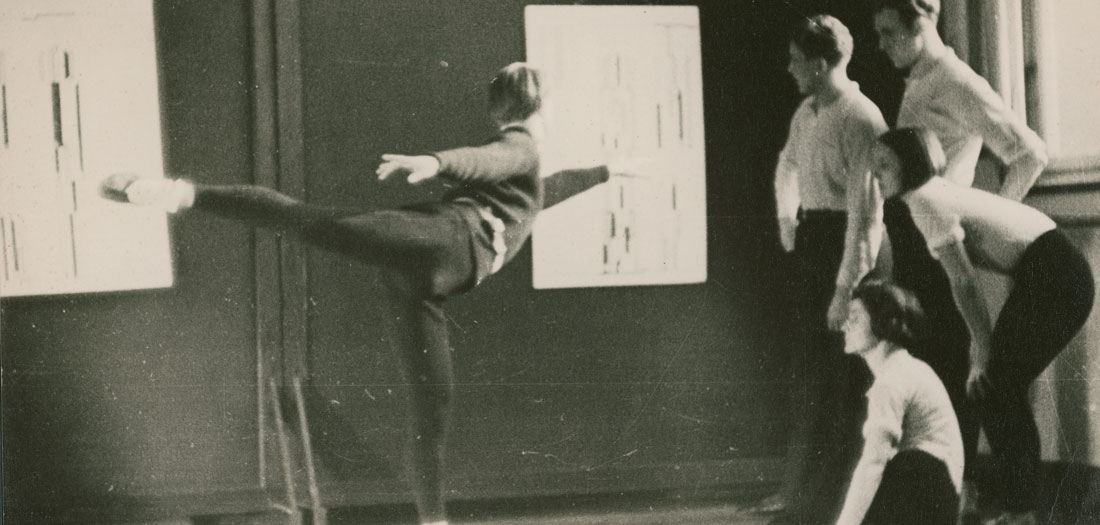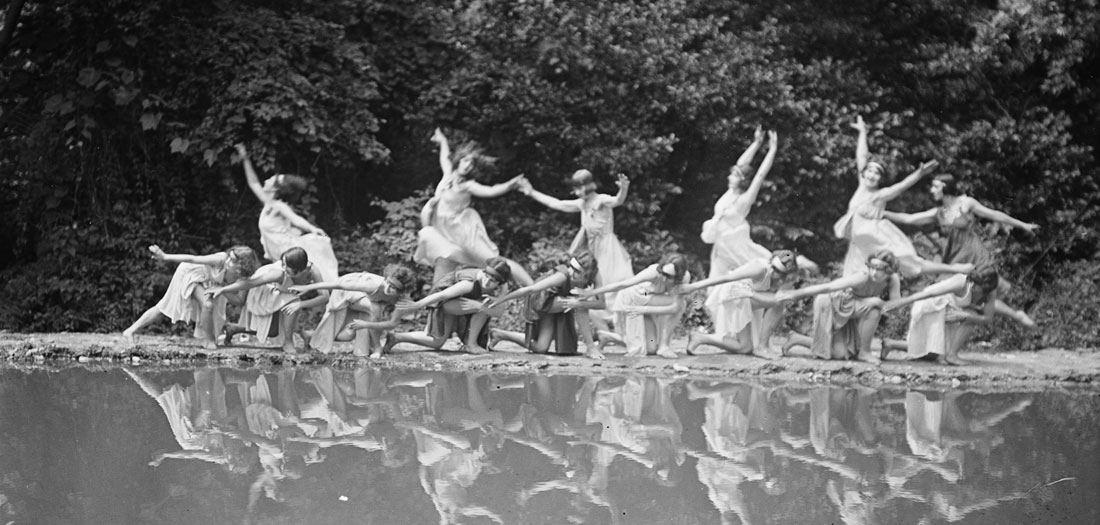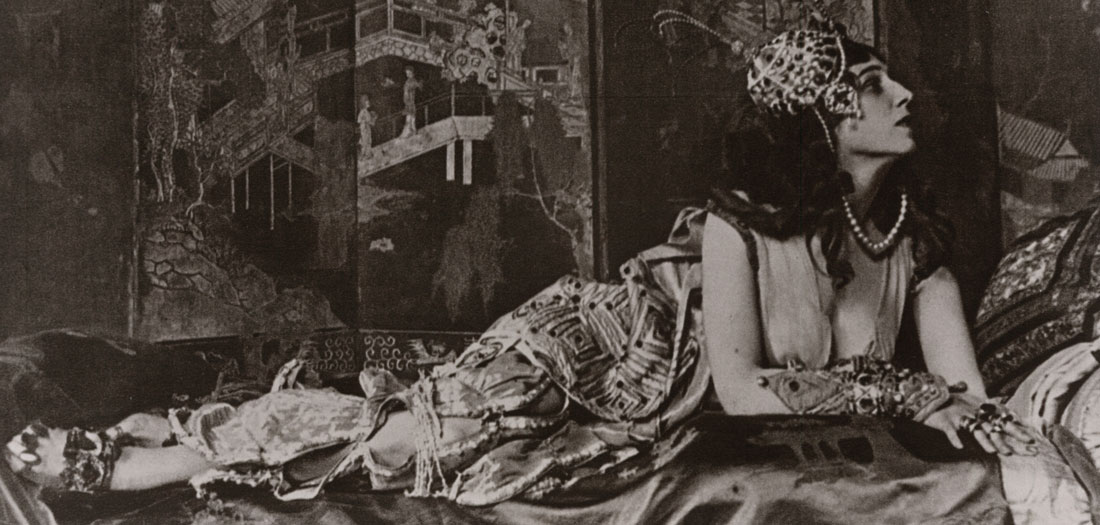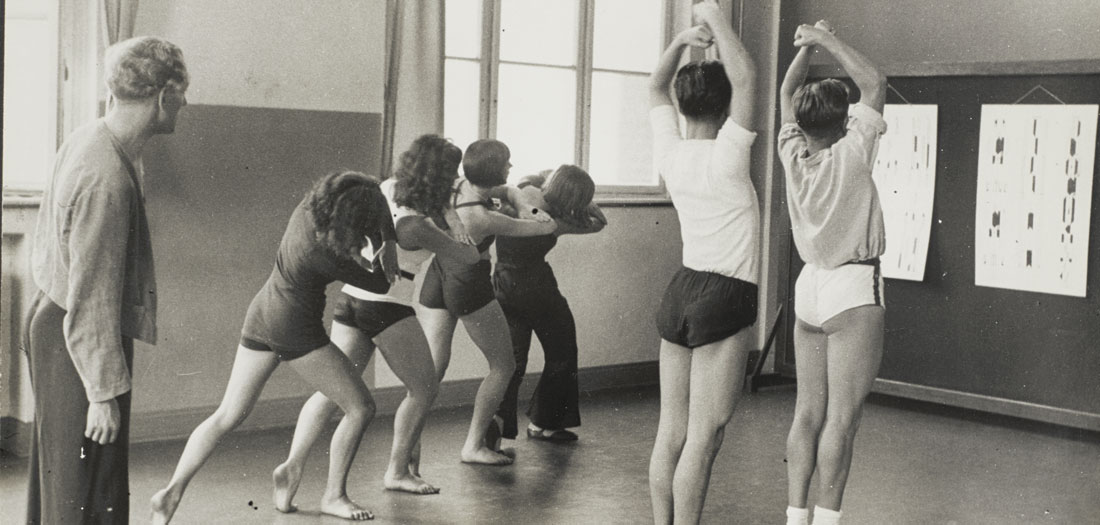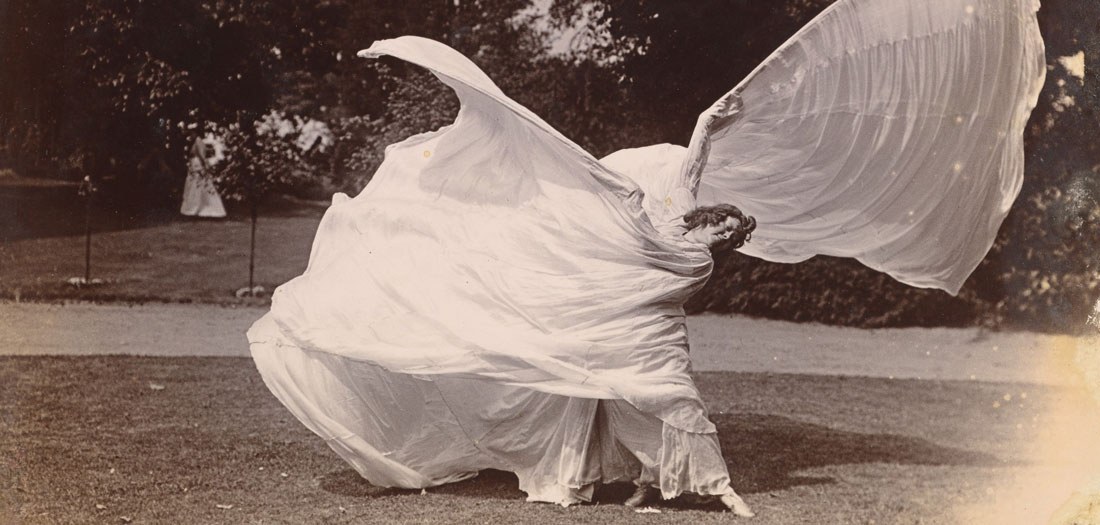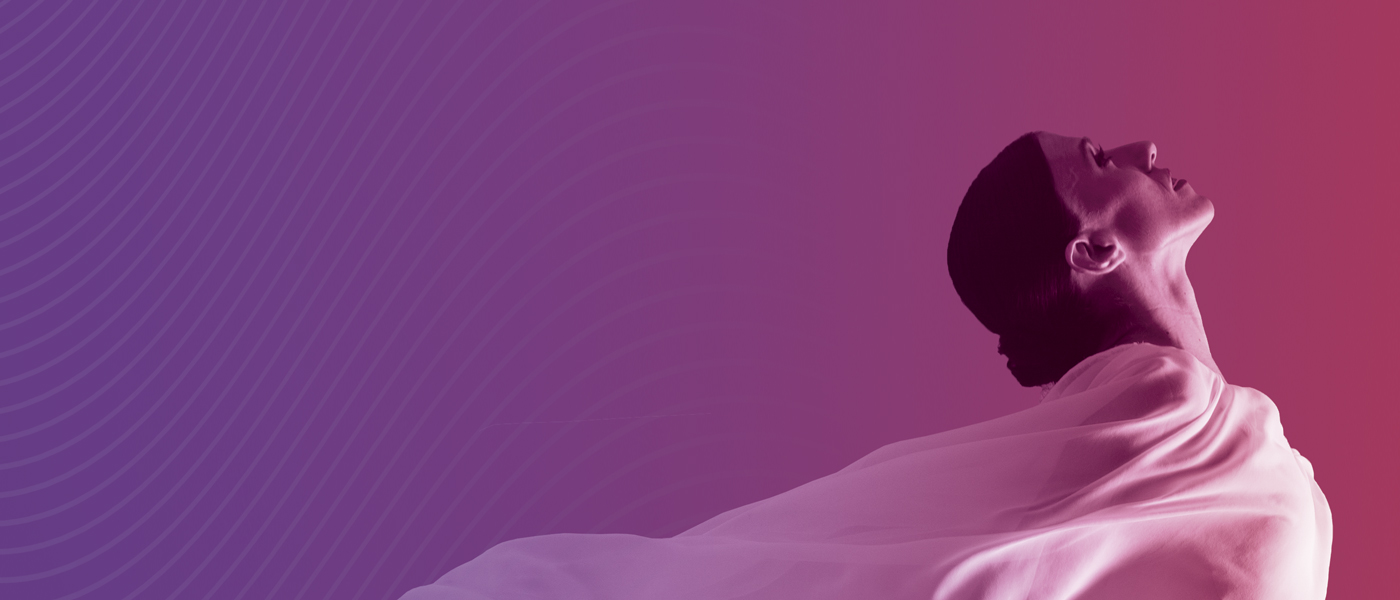
An exhibition that brings us an in-depth look at the ground-breaking figures of modern dance through seven choreographers and dancers: Isadora Duncan, Loïe Fuller, Josephine Baker, Tórtola Valencia, Mary Wigman, Martha Graham, and Doris Humphrey. The exhibit thus vindicates the role of these historic pioneers who believed in the need to create new forms of expression and liberate the female body, challenging social conventions and the rigid canon of Romantic ballet.
An exhibition that brings us an in-depth look at the ground-breaking figures of modern dance through seven choreographers and dancers: Isadora Duncan, Loïe Fuller, Josephine Baker, Tórtola Valencia, Mary Wigman, Martha Graham, and Doris Humphrey. The exhibit thus vindicates the role of these historic pioneers who believed in the need to create new forms of expression and liberate the female body, challenging social conventions and the rigid canon of Romantic ballet.
Seven 20th-century female dancers and choreographers who believed in the need to create new forms of expression and liberate the female body, challenging social conventions and the rigid canon of Romantic ballet. Isadora Duncan, Loïe Fuller, Joséphine Baker, Tórtola Valencia, Mary Wigman, Martha Graham, and Doris Humphrey laid the foundations of modern dance thanks to their creativity, revolutionary staging, and unconventional lifestyles.
The Telefónica Foundation presents ‘The Dancer of the Future. From Isadora Duncan to Joséphine Baker‘ –from 23 March to 24 June, on the fourth floor– a new exhibition that continues in the direction laid out these past few years to present modernity through the figures that contributed to its invention. An exhibit that vindicates the role of these pioneering women and presents turn-of-the-century dance as a new art form.
The exhibition, commissioned by María Santoyo and Miguel Ángel Delgado, includes the preparation of contents under the advisement of Ibis Albizu, Doctor in Philosophy from the UCM and expert in dance theory, and with the participation of professional dancer Agnès López Río, who recreates the most famous movements of these dancers through a captivating audiovisual experience throughout the exhibition.
Using the traditional resources of a museum and the audiovisual installations more common to the stage, the exhibition presents seven experiential spaces for each of these seven figures, beginning with Isadora Duncan, the forerunner and pioneer of this revolution in the world of dance.
Isadora Duncan
Isadora Duncan (San Francisco, USA, 1877 – Nice, France, 1927). Pioneer and visionary; the first to question classical ballet. Her creativity, revolutionary staging, and lifestyle had a profound impact on her contemporaries.
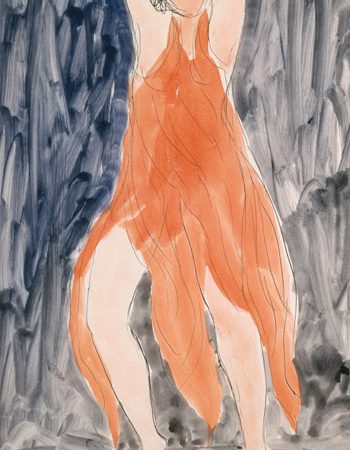
She was the inspiration for the rest of the exhibition’s protagonists, a legend who prompted the later formulation of dance as a specific language of the avant-garde. Duncan contrasted sinuous, fluid, organic and free movements with the geometric structure of ballet, thus rejecting verticality and limitations. Her sources of inspiration were the waves of the sea, which she recreated on stage, and the figures of Greek ceramics. She took some of their most revolutionary formulas: bare feet, tunics, neutral backgrounds, and the enraptured poses of Dionysian dances. Other references were the poetry of Walt Whitman or the paintings of Sandro Botticelli. Although there are few graphic or audiovisual records of her dance, her iconic way of dancing has been enshrined in writings, reviews, theatre critiques, representations by visual artists, and through her disciples, the Isadorables. The exhibition also includes a selection of a sequence of watercolours by American modernist painter Abraham Walkowitz that represent the movements of Duncan’s dancing.
The popular scene: Loïe Fuller, Tórtola Valencia, and Josephine Baker
This area is dedicated to three representatives of the free spirit of the popular stage: Loïe Fuller, Tórtola Valencia, and Josephine Baker. Enormously popular dancers of their time, they turned clichés on their head and broke sexual taboos with dances such as the Cabaret or the Charleston, and their influence would even spread to the most academic of settings.
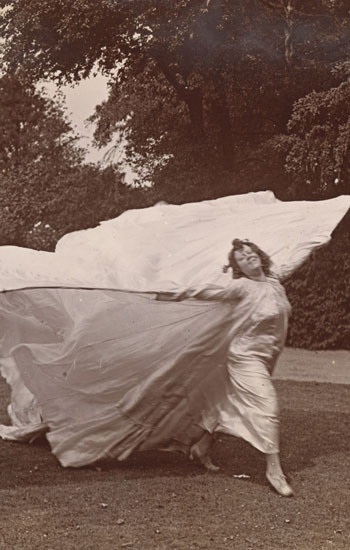
This section shows an extract from the film “The Dancer” by Loïe Fuller (Fullersburg, USA, 1862 – Paris, France, 1928), whose dancing was influenced by the laws of light refraction and all manner of luminescence. During a visit to the Cathedral of Notre Dame in Paris, she was stunned by the colours that the stained glass windows projected onto her dress. Thus began her interest in understanding the laws of science and her relationship with renowned scientists such as Camille Flammarion or the Curies. Her findings were applied in shows in which she used electric light in a hitherto unseen manner. Joséphine Baker (Saint Louis, USA, 1906 – Paris, France, 1975), the queen of the Charleston, and also known as the “Bronze Venus”, revolutionised the world of dance in the ‘20s with a wild dance based on daring and energetic leaps, mimicry, the naked torso, and violent contortions. In February 1930, she made her début in Madrid at the Grand Metropolitan Theatre, no longer standing. In the same period, Spanish-born Tórtola Valencia (Seville, 1882 – Barcelona, 1955) bewitched audiences with the exotic styles of Eastern dance, which were just beginning to sweep theatres high and low in Europe and the United States. The dancing of both is captured in the exhibition of original posters for their shows, plus press clippings, photographs, and clothing that they wore in their performances.
Expressionism: Mary Wigman
German born Mary Wigman (Hanover, Germany, 1886 – Berlin, 1973) is the main feature of this section that analyses the relationship between the dancer and choreographer with German expressionism and the mask, a symbol of the fears gripping European society between the wars.
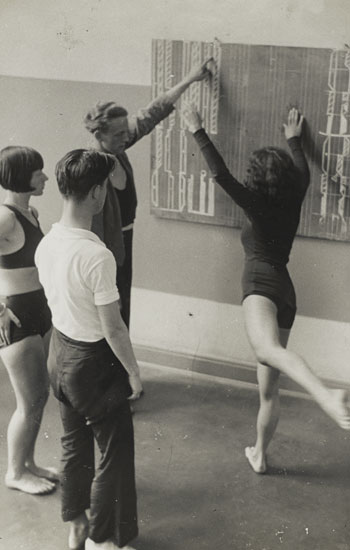
Wigman believed in a completely untethered form of dance, in which the strength of hand movements and the presence of the floor played a major role. Given her close ties to the German expressionist movement “Die Brücke”, it was also easy to see the influence between the performing arts and dance in her productions, especially in her costume design, choreographies, or stage design. The space dedicated to the exhibit’s sole European dancer focuses on her choreography of “The Dance of the Witch” (1914) and the ceremonial mask she had made, influenced by Japanese Noh and Butoh theatre. In addition to an installation of 12 masks, one a Noh theatre original, the printed material shows the relationship forged between the German dancer and Rudolf von Laban, founder of a choreographic notation method that is still widely used today. Both made contributions to its development, which sought to liberate dancers from the yoke of any other kind of artistic expression. An interactive installation will allow the public to create its own choreographies and to see them translated into a printed score in real time using the symbols that make up the Laban notation system.
Martha Graham
The next space is dedicated to Martha Graham (Pittsburgh, USA, 1894 – New York, 1991), creator of an autonomous choreographic language capable of communicating all essential passion, which continues part of the core education of any contemporary dancer.
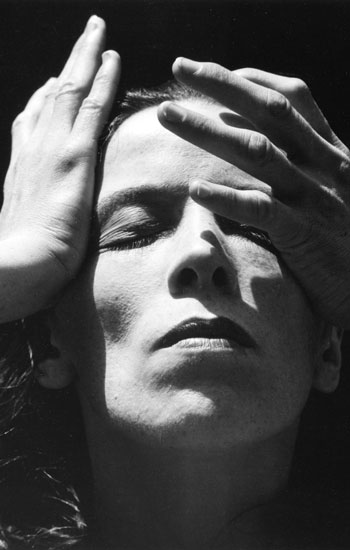
Her method, situating the centre of the body in the solar plexus, is based on the contraction and expansion of the pelvic movement. Every gesture in her choreographies has a precise meaning that appeals to the emotions and is loaded with theatricality, introspection, and solemnity.
This large audiovisual installation finds inspiration in the quote in which she calls dancers “the athletes of God”. Six screens, which simulate an Olympic frieze, recreate six sequentially repeated movements that correspond to six passions: Joy, Sadness, Anger, Fear, Love, and Desire. Graham believed that dance was the ideal method for the expression of archetypes, a term coined by psychoanalyst Gustav Jung to refer to images and subjects that are part of humanity’s subconscious and serve to feed the legends and myths of cultures. Graham was the most intellectual of the dancers and the one having had the greatest influence on the next generation.
Doris Humphrey
The last section features choreographer Doris Humphrey (Oak Park, USA, 1895 – New York, 1958), revolutionary due to the fact that she put an end to the vertical nature of dance and placed more emphasis on gravity and draw attention to the pull of the dancer’s body towards the earth.
Doris Humphrey in a master class, ca. 1950. Jerome Robbins Dance Division, The New York Public Library for the Performing Arts, Astor, Lenox and Tilden Foundations.
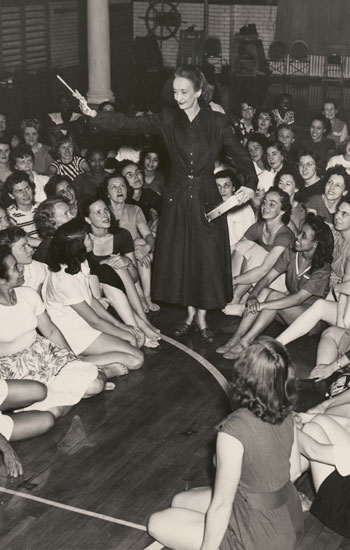
She was the first to break with the hierarchical and pyramidal structure of the prima ballarina, and to bring a horizontal nature to the movements of the group.
A triple audiovisual installation recreates the controlled fall of the body, playing with the control over balance and unbalance, what is static and what is in movement, thus demonstrating the concept that Humphrey called Kinesthesia.
Three representations of the fall over time can be seen in this installation: Humphrey’s own and two other screens with the professional dancer Agnès López Río, who improvises the same movement in the present and another in a more futuristic approach.
Programme of workshops and parallel activities
- On the occasion of the exhibit, the education department has organised a programme of free complementary activities for the entire public. Here is all the information.
- Also linked to our exhibit, we are launching a new photography contest in the Instagrammer community, where the movement in the image is the protagonist. Publish your photograph on Instagram with #themovingcontest between 26 February and 11 March, both dates inclusive. The 50 best images received will be exhibited in the Instagrammers Gallery starting on 2 April 2018.
In collaboration with:






